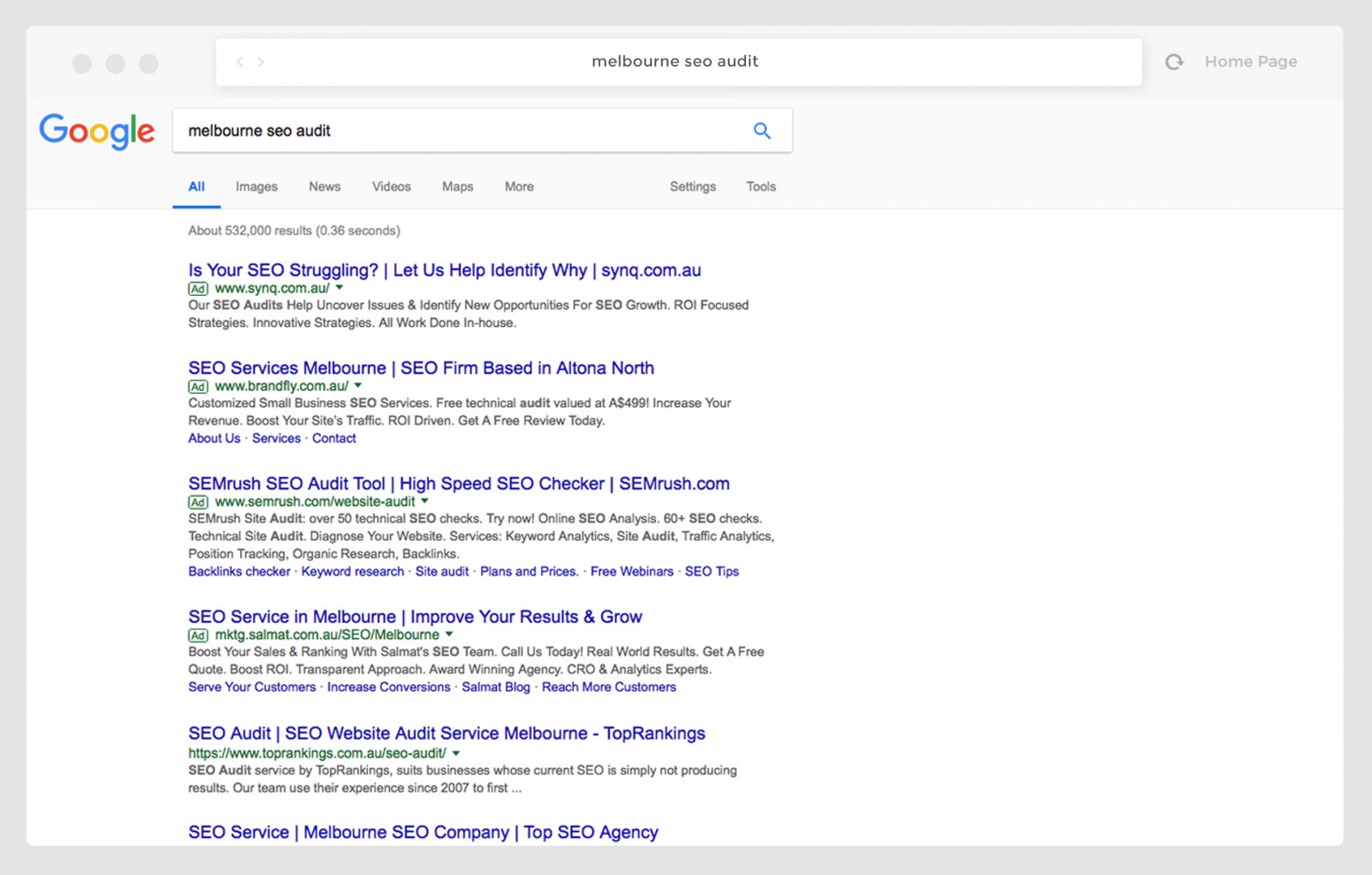Get Your Website Set Up Right from the Start: A Beginner’s Guide
Building and maintaining a website is much like building a home. Get your foundations right from the start and you’ll have a website that withstands the test of time, instead of one that falls down with every change of the wind!
Having a well-designed, smooth-running, and optimised website benefits business owners by providing an ease of use for their potential clients. What’s more, by providing truly helpful information to users, they will share your knowledge with others and—when it’s time—contact you as the go-to source for their needs. This, in turn, naturally boosts your search profile and ranking, giving you more authority online in your field.
There are many technical and non-technical factors that need to be considered when setting up a website—some of which you can easily do yourself, others may need a professional to step in to help. Just keep in mind that a badly set up website, or even a good one using bad practices, can potentially result in lost business.
However, following best practice and doing the right things ensures you get found by both search engines and real humans. And while it is an effort, it’s one that will pay dividends into the future!
We know there is a lot to take in when wanting to gain authority online. It can be overwhelming, but don’t worry! By reading our complete guide for setting up a new or fixing old websites, you’ll learn in easy-to-digest-bites of information how to get your website on the right track!
STEP 1:
Registrar & Hosting
When it comes to setting up a website, there are two elements:
1. The domain name you choose
2. The host that keeps your website online
We typically work with businesses that already have a domain name. However, if you’re just starting out or if you are after a new domain, these resources will definitely get you moving in the right direction:
Domain Name Selection
Select your domain name carefully, just as you would your business name. In fact, we suggest your domain name incorporate your business name or services in some way. This is the address at which you’ll be identified on the web, so choose carefully and ensure it’s easy to remember, easy to type, and relevant for users.
Keywords in Domain Names
Keywords in domain names can be a factor in Search Engine Optimisation. They help users easily identify your brand, services, or location at a glance, and it’s another layer added to your overall ranking for relevance.
But be mindful not to get all spammy about this. Give preference to your business name and its services for your domain. If a keyword seems a natural fit and makes sense to include then go for it!
Once you’ve settled on a domain name, have it registered with a domain name registrar.

The process of planning your website is just as important as the development itself.
Website Hosting
So you have a domain name, but that doesn’t mean your site’s online. Website hosting is the service, which provides the platform that allows your website to become accessible—visible—and viewed on the Internet. It’s important to select a reputable host who has good support, fast loading speed, and solid uptime for your website.
If your website goes down often (as in you type in the domain and you get an error page) or is slow, or if the hosting doesn’t have enough space for you or doesn’t offer good support or access, then your users are probably feeling that negative impact, too.
If you’re launching your first website, then make sure you choose a rock-solid hosting provider before you go live. But if you have an established website and you’re experiencing some of the issues above, you might want to consider transferring to a host who will make your site’s performance a priority. It’s important to select a good host in order to ensure good support, speed, and efficiency of your website. If your website goes down often, is slow, doesn’t have enough space, and doesn’t offer good support or access, then you may have hosting issues.
STEP 2:
Basic Monitoring
The basic monitoring of your website, like the maintenance of your home, is essential to ensuring it’s secure, up-to-date, and working well for you.
The easiest way to monitor your website is to sign up for Google Analytics and Google Search Console. These platforms are supplied free and will give you key insights on your site’s visibility, user traffic, as well as if Google is picking up on any technical issues.
What will Google Analytics tell you?
Amongst other things, once installed properly, it will let you:
1. Evaluate the traffic flowing to your website. If your traffic drops, this can indicate seasonal or user patterns, or possible issues related to rankings. Whilst a spike in traffic may show something recently done, such as onpage SEO or a marketing campaign, worked well.
2. Compare your traffic at different times of year, for specific periods, or track performance over time.
3. Get insights on user behaviour, such as tracking what users do on your website, where they come from, which websites refer you traffic, and how long they stay. This is useful in seeing where your users drop off so you can improve those areas on the website in order to keep or convert them.
4. Set goals and track goal conversions. This allows you to know what pages or forms are getting users to convert into real leads or buyers. From there, you can measure performance, and improve your pages, advertising campaigns, and marketing strategies to reach your goals.
What does Google Search Console do?
Google Search Console is how Google “communicates” with website owners. It’s there to help you understand how Google sees your website and what you can do better to improve your rankings by advising:
1. Whether you have submitted your sitemap or not
2. Manual notices or penalties
3. Malware or spam issues
4. Meta tags duplication
5. Possible Googlebot crawl or indexation issues
6. Other web pages linking to your pages

What is a Googlebot?
A Googlebot (a.k.a. a bot or spider) is a program designed to “fetch” information for Google. Once on your site, the Googlebot “crawls” it to find out what it’s about and to see if you have any new pages to add to the search results. This automated process can pick up issues and may affect where you show up in search results.
Always work with Google, rather than try to outsmart them in order to improve rankings. Many a website have been penalised for trying to “game the search” through bad practices (e.g. keyword stuffing, spammy pages, which don’t add value to users, and so on). Remember, in the long run, those best rewarded are those with relevant, helpful, and well-optimised websites.
Trying to understand Google Analytics and Search Console won’t be for everyone. Sometimes it’s easier to just focus on your business and let someone else take care of interpreting and improving the data. If you require a dedicated team to monitor your website and make sense of the information for you, click here.
STEP 3:
Technical Set-Up
Just because a website is visible online doesn’t mean it’s been set up in the best way possible to reach your target audience or allow search bots to find it. Countless technical issues can unknowingly hamper your website from realising its full potential.
This is where either a basic or a thorough website audit becomes like gold, as it will unearth those problems which may be holding your site back.
There are four main factors that form a good website audit:
1. General site health check, to determine if your website is indexed and appearing correctly in search results. Checks will also be performed to find out about organic traffic, crawl health, site performance in terms of speed and load time, security, and trust elements.
2. Site architecture, to check how the website is structured on the back end. This will tell you if the website is using the right canonical URL, if it has the correct URL folder and internal linking structure, if it has appropriate redirection management, and if it has correctly set up robots.txt and XML sitemap files.

A solid site architecture is crucial for any website looking to compete in the online world.
3. On-page optimisation review, to ensure your page has been “search engine optimised” (a.k.a. SEO) properly to give you the best chances in the search results. This includes checking for unique and quality content, and proper optimisation of all elements including images and internal links, spam check, relevant keyword usage, user experience and so on.
4. Off-page optimisation, to evaluate your backlinks and social engagement and provide options for improving your “link profile”. From here, you can find out who’s sharing your content and where some of your traffic is coming from.
In addition to Google Analytics and Search Console, there are also other tools that can assist with monitoring and/or auditing your website. Some of the most highly recommended are:
1. Screaming Frog
2. Xenu Link Sleuth
3. Majestic SEO
4. OSE
5. Cognitive SEO
WHAT HAPPENS AFTER A WEBSITE AUDIT?
Following a website audit, you should know more about the strengths and weaknesses of your site’s technical set up. From there, you should look to improve or totally resolve high priority issues.
Keep in mind, though! Some red flags may not be once-off fixes. There will likely be items, which will need to be worked on continuously like updating core files, plugins, and content. Remember, like a house, ongoing website monitoring and maintenance is integral to how well it performs and how long it will last.
STEP 4:
On-Page SEO
On-page “search engine optimisation” (SEO) is one of the most important components to ensure Google knows what your pages are about, and to allow visitors to reach the right information on your website. On-page SEO for each individual webpage includes content, keywords, title tag, and meta description.
Good thing is, this is one of the SEO components you have control over, meaning it’s one of the easiest elements to begin improving with!
But be careful. If your website is over-optimised (yes, that’s a thing—such as adding too many keywords to a page), or not optimised well enough (the other end of the scale), then your website may not show up in relevant search results and you will lose targeted visitors. Website pages that have well-matched content-to-keyword relevancy have the most true traffic potential.
What Keywords Mean
Keywords are the combination of words (sort of like “phrases” really) which you think best describe a page on your website. When correctly used, they will allow visitors to find your page and give them what they were looking for.
Keywords should ideally be more than just a single word. We class these as a “long-tail” keyword, which may string together a series of relevant terms. For example, the keyword “Melbourne” is a pretty broad word, but when you add “SEO” and “Audit”, the long-tail keyword becomes “Melbourne SEO audit”, which narrows down the relevancy.

These keywords should be naturally incorporated into the page’s text, as well as the title tag and meta description (the descriptive elements behind the scenes) in order to allow search engines to know what that page is really about. Once they match up, when someone searches for that phrase, depending on competition and location variables, that’s when you have the best chances to appear in relevant search queries.
Now that Google has gotten better at understanding what web pages are about, some believe that the use of exact keywords in content has dropped in importance. In any case:
It is still vital that your content contains the terms and related words that are relevant. Which is why the golden rule is to first write naturally to ensure you’re creating engaging and valuable content, then think about what keywords integrate well with that content.
Doing Keyword Research Yourself
If you’re the DIY type, you can easily get started with keyword research yourself so your pages can start to include this integral component of online marketing. Start by typing a relevant term or question, which your user might ask about your service and see what Google “auto-populates” the field with. From there, use Google Keyword Planner to check the keyword out.
Title Tags and Meta Descriptions
In addition to keywords, good on-page SEO should also include relevant title tags and meta descriptions for each page. This “metadata” isn’t actually visible on the page itself, but what appears as the “title” and short “description” in the search results—and both should also include your keyword.
We see this part of on-page SEO just like marketing. Get them right, and web browsers will be engaged enough to click through to your site. Get them wrong, and they’ll just scroll past to your competitor. Just remember, Google has ever-evolving metadata requirements, so remember that when doing DIY SEO, it’s important to keep up-to-date with the latest on-page SEO best practices, as this changes often. Getting it wrong can lead to issues that you might have a hard time recovering from!

We’ve got three words for you: content is king. And it isn’t getting overthrown anytime soon.
Your Page’s Content Quality
The cherry on top of this part of SEO involves ensuring the content you produce—whether it’s for your home page, FAQ page, or blog—is original and of high quality. What’s more, you need to make sure good content is continued to be produced regularly, either through adding new interesting pages or blogging.
When thinking of content quality, ask yourself, “Would I be interested in reading this if it wasn’t my business?” and “What information can I provide that will get people to come back for more?” Recall a time when you searched for something online, and found something you didn’t like.
Why did you hit the back button? But then, when you did find what you were after, what made you stay on the site? Why did it hit the right button for you? Was it helpful? Engaging? Meaningful? Thinking about your own search experience can play a huge part in you, creating true, quality content for your users.
Furthermore, content also consists of using media such as photos, videos, slideshows, and infographics where relevant. When done right, these other mediums will give your text an extra dimension of interest to your visitor, keeping them on your website for longer.
STEP 5:
All Together Now
When you combine all the previous steps together, it will create a domino effect on how you appear in the search, how visitors engage with your site, as well as the overall success of your website. A well-designed, optimised, and maintained website, which provides quality content to the end user, will ensure you don’t miss out on the valuable customers you are after.
Remember, a good website doesn’t just load fast or appear high in the search results, it also fosters true engagement and value to its users. This interaction, in turn, gives back to you in spades when users share your content—another component which attracts the favourable notice of Google. This all snowballs the success of your website.
Something to keep in mind, though: unless you’re willing to pay for search placement (through “Pay Per Click” Adwords), these elements take time to mature and saturate the web. So be patient, it’s worth the wait!
We hope you found this guide helpful.
But listen. We’re complete geeks with this stuff so we totally understand if it was like trying to read another language! But if, at any stage you need some advice or help, feel free to just shout out to us by clicking here.